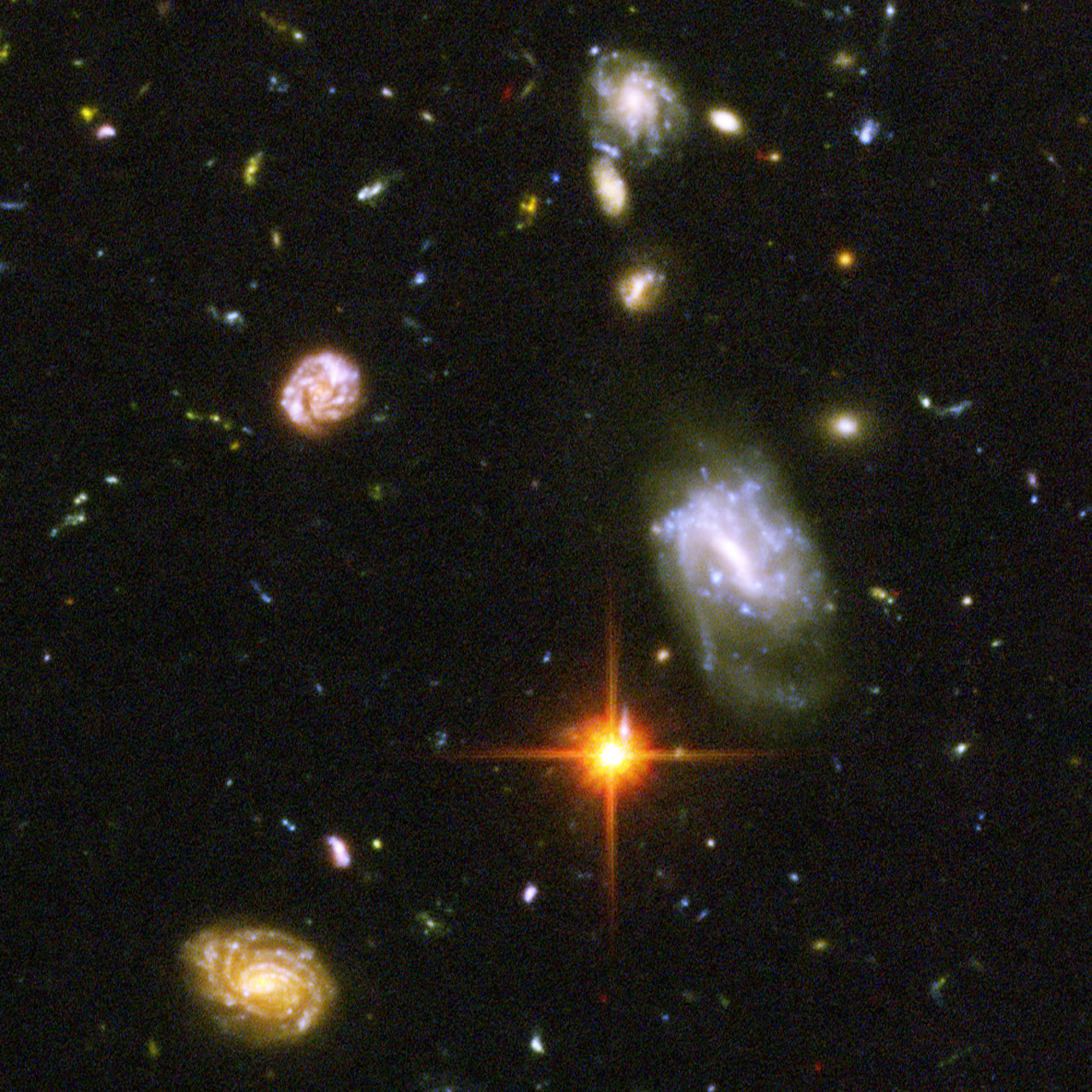Ultra Deep
[Via Sean Carroll] Yet another stunning indictment of NASA’s decision to cancel further servicing of the Hubble Space Telescope (can’t let actual science stand in the way of a manned mission to Mars, now can we?).
The Hubble Ultra Deep-Field survey of the oldest and most distant galaxies ever seen.

We’re looking at some roughly 10,000 galaxies at redshifts between z=7 and z=12, a mere 400 to 800 million years after the big bang. To a ground-based telescope, this patch of sky is nearly empty. Scientifically, the stuff in the foreground, beautiful though it is, is not nearly as important as those faint dots in the background – the earliest galaxies ever observed.
N. B. the above is a low-resolution jpeg of the full image. Below is what you see when you zoom in to look at a portion on the lower-left of the full image. Note the two colliding galaxies (scroll a bit to the right).

Hop on over to spacetelescope.org for more pictures.
